BMW i4 M50 & i4 eDrive40 First Drive Review : Interstellar Twins




BMW i4 M50 & i4 eDrive40 First Drive Review : Interstellar Twins
Melbourne, Australia - The prospect of travelling after two years of border closures and lockdowns was strange, to say the least. But when BMW invited us to Melbourne to test drive their very first electric vehicle fettled by the brand’s M division, I leapt at the opportunity.
Rather fittingly, it’s a city that I’m intimately familiar with, having spent the better part of two years in Melbourne during my university days. Also, it’s the last place I visited before the pandemic put a temporary pause on my travel plans.
We began our journey some 30km south of the CBD at BMW Group Australia’s head office in Mulgrave, where we first gazed upon the two cars that we’d be driving for this trip.
The BMW i4 eDrive40, which saw its Singaporean debut back in March, and BMW’s first fully-electric M automobile: the BMW i4 M50.










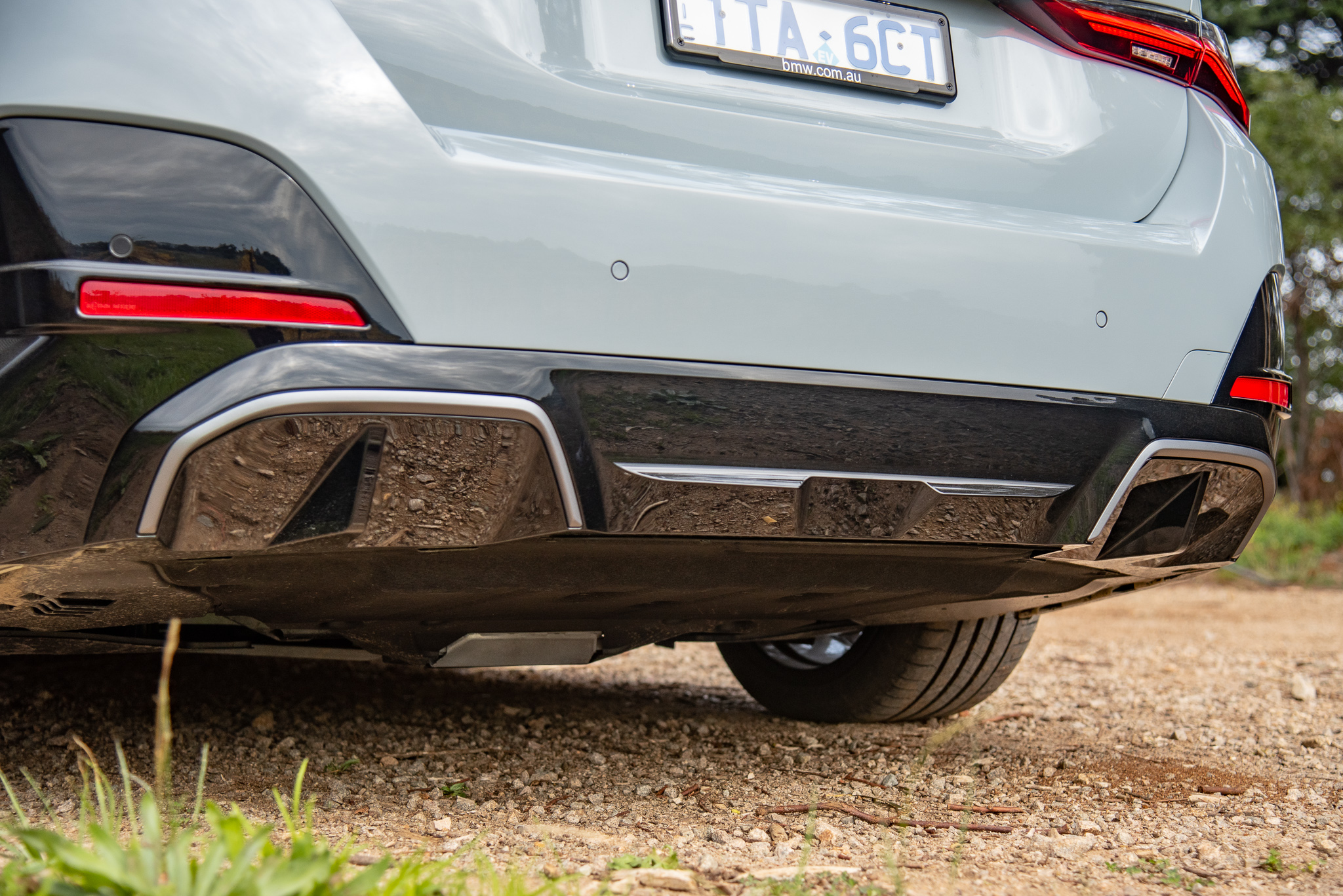

As the trailblazer for BMW’s performance-oriented electric "i" models, it has to look the part. To that end, the i4 M50 checks all the right boxes for a sporty, sexy, performance four-door coupe. Save for some aero touches and the absence of exhaust tips, it’s almost a dead ringer for the M440i xDrive that we’ve tested.
Resplendent in Brooklyn Grey Metallic and gloss black accents, the i4 M50 is considerably more menacing than the eDrive40 we glimpsed earlier this year. With more aggressive mouldings in the front bumper, M badges, twin-spar mirror caps (like a true M car), 19-inch rims and bright red brake callipers. That being said, these sporty embellishments come at a small cost. A drag coefficient of Cd 0.25, a smidge more than the eDrive40's Cd 0.24.


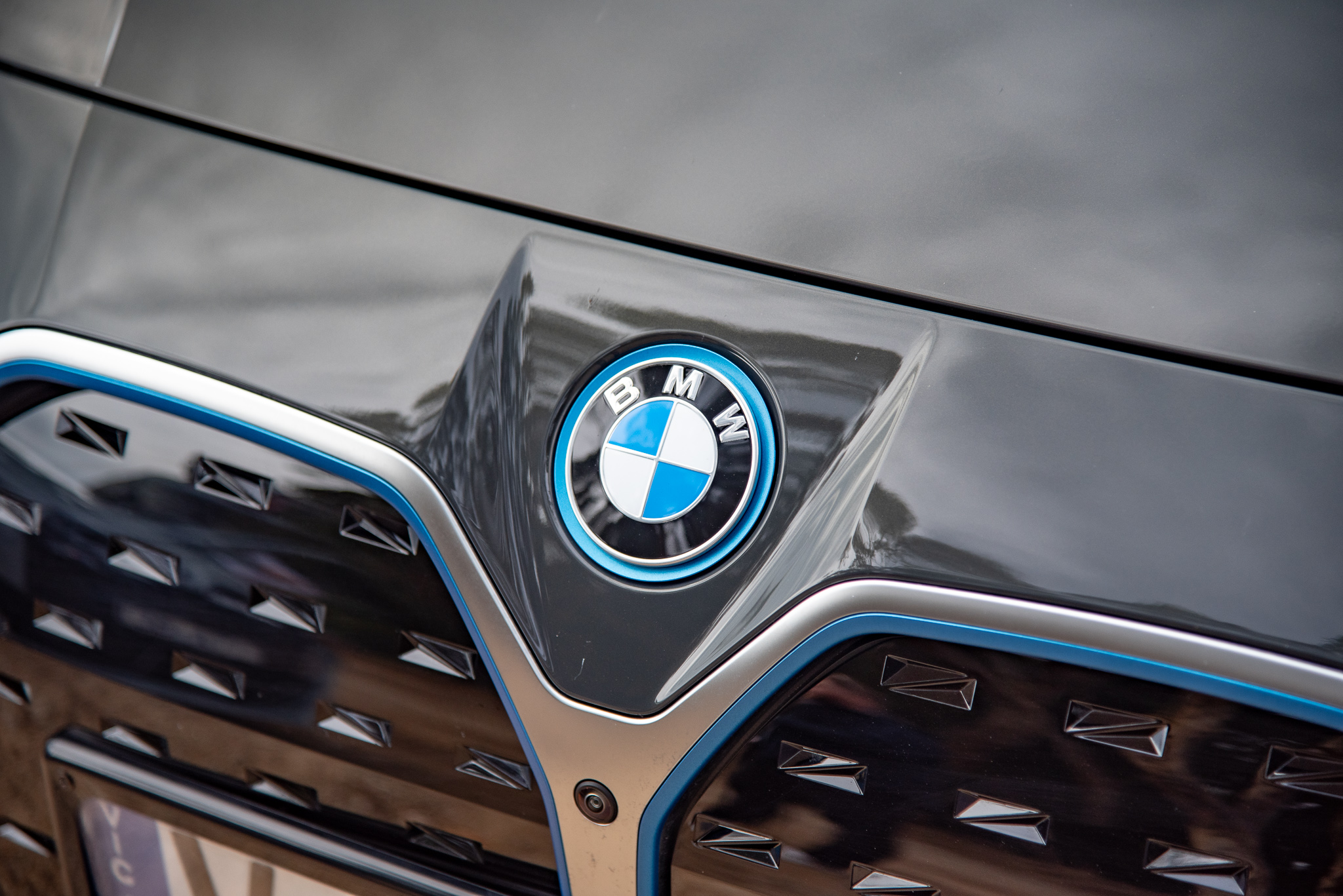





However, there’s no denying the similarity between the two i4 variants we had with us. The i4 eDrive40 that sat before me was also festooned with an assortment of parts from BMW M. Apart from the smaller brake kit, boot lid spoiler and M badge on the grille, the only differentiating characteristics that diverged the two models are the blue-hued trim pieces and Dravit Grey Metallic paintwork.
That being said, both cars share the same 80.7kWh battery pack, which according to WLTP test cycles, puts the eDrive40 and M50’s range figures at 590km and 510km respectively. The battery cells, which are just 110mm high, are structurally integrated into BMW’s immensely adaptable cluster architecture (CLAR) platform, which enables the i4 to retain its svelte, low-slung four-door coupe proportions. Even in the cabin, there isn’t a discernible difference in head and knee room when you stack it up against the ICE-powered 4 Series Gran Coupe.

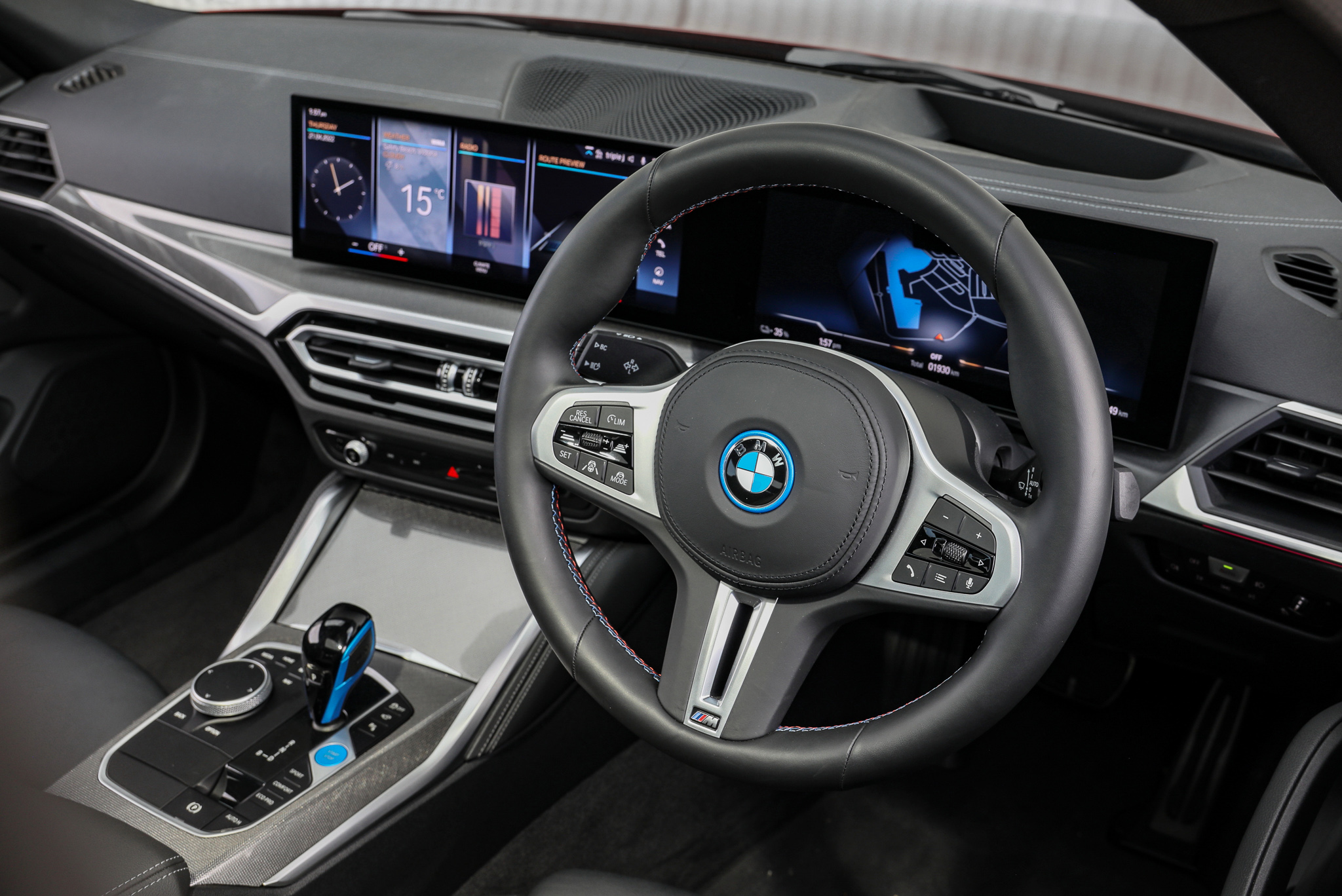






Elsewhere in the cabin, the centre console is identical to most BMW sedans on the market, albeit with some additional blue bits to remind you that you're piloting a BMW i car. Apart from the new BMW curved display, which consists of a 12.3-inch gauge cluster and 14.9-inch infotainment screen, the switchgear and touchpoints are identical to the 3 and 4 Series families. It feels familiar.
Even the Operating System 8 software (like you get in the iX SUV and new 2 Series Active Tourer) wasn’t as tricky to operate on the go as I initially thought. Truthfully, it’s a system that doesn’t take much getting used to once you come to terms with it. As I did when I set off on the first leg of the journey in the i4 eDrive40.


BMW i4 eDrive40 - Driving down under
The drive down south toward the Mornington Peninsula was largely uneventful as we coasted down the M11 highway. Having experienced first-hand the exorbitant fines for speeding, I dutifully kept to the limit. Which gave me a chance to sample the adaptive cruise control and adaptive braking regeneration, which automatically adjusts the amount of regeneration you get while “freewheeling” in the i4.
It wasn’t long before our convoy turned off the freeway and onto the winding stretch of road that led up to Arthur’s seat lookout. I promptly made full use of the 340 horsepower and 430Nm of torque I had on tap during the thousand-foot ascent to the top of the hill. It was also when I discovered perhaps the biggest caveat of the eDrive40: its weight distribution.

On paper, the i4 eDrive40 has a weight distribution ratio of 45:55 front to rear. On the road, the difference is even more pronounced, compounded the faster you go. As competent and light-footed as the eDrive40 was on level ground, there was no getting around its 2-ton kerb weight on the ascent. Travelling up the hill, the back end dips under power and lifts the nose just enough for the car to understeer slightly whilst tackling a particularly sharp set of bends. It’s only under braking that the front tyres could bite into the asphalt for better grip and a sharper approach angle.
Despite that, the eDrive40 wasn’t left in the M50’s dust in the bends. On the straights, the i4 M50 leading the convoy surges ahead with ease thanks to its AWD dual-motor drivetrain. But once I’d caught up with it at the next bend, the eDrive40 proved brisk enough to stick to the M50’s tail. That is, until the road straightened out and the M50 pulled away yet again.
After a quick spot of (farm-to-table) lunch, we headed further south toward Sorrento to catch a 45-minute ferry over to Geelong. It was then that I traded keys and took the reins of the M-Division car.

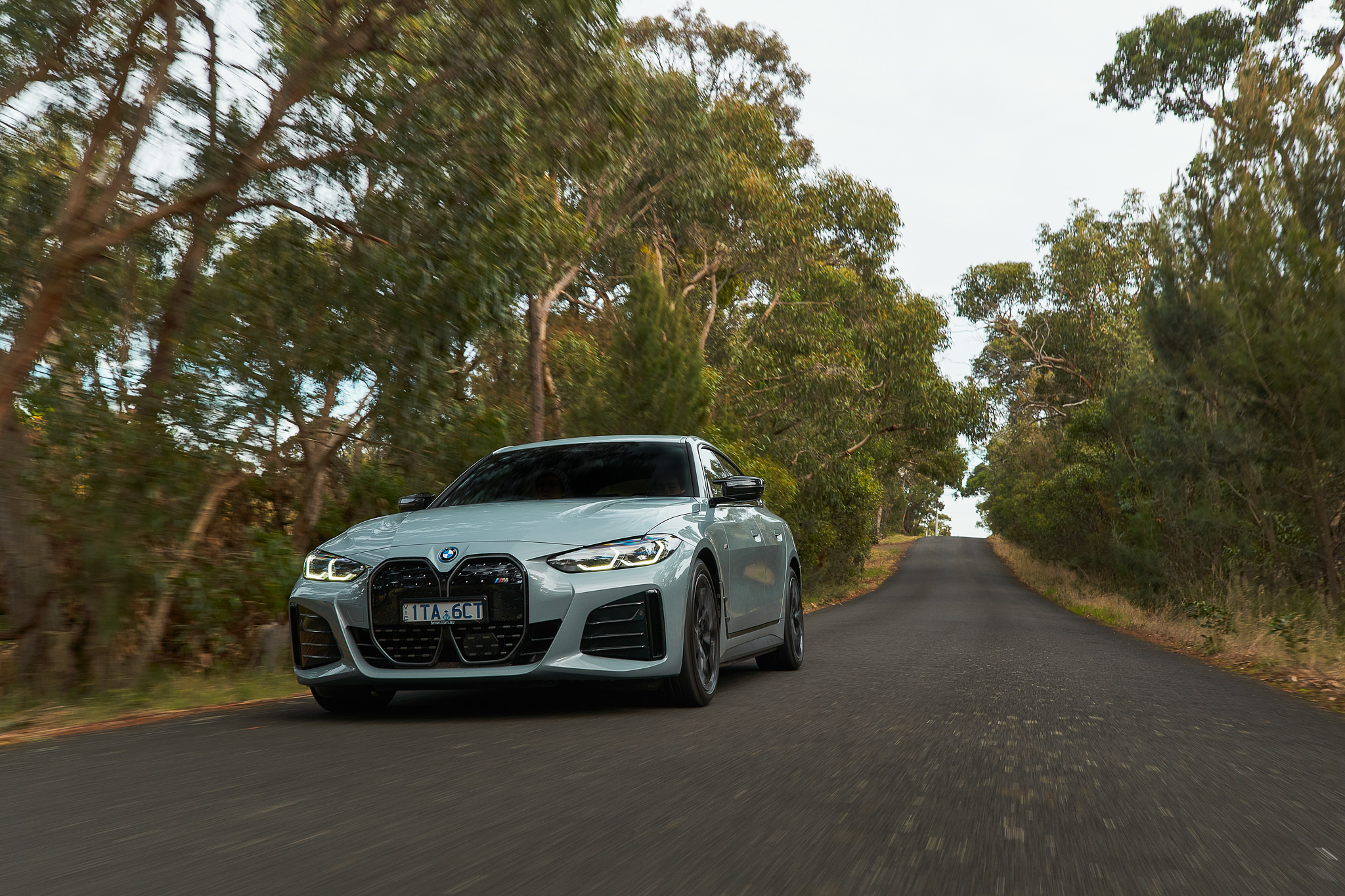
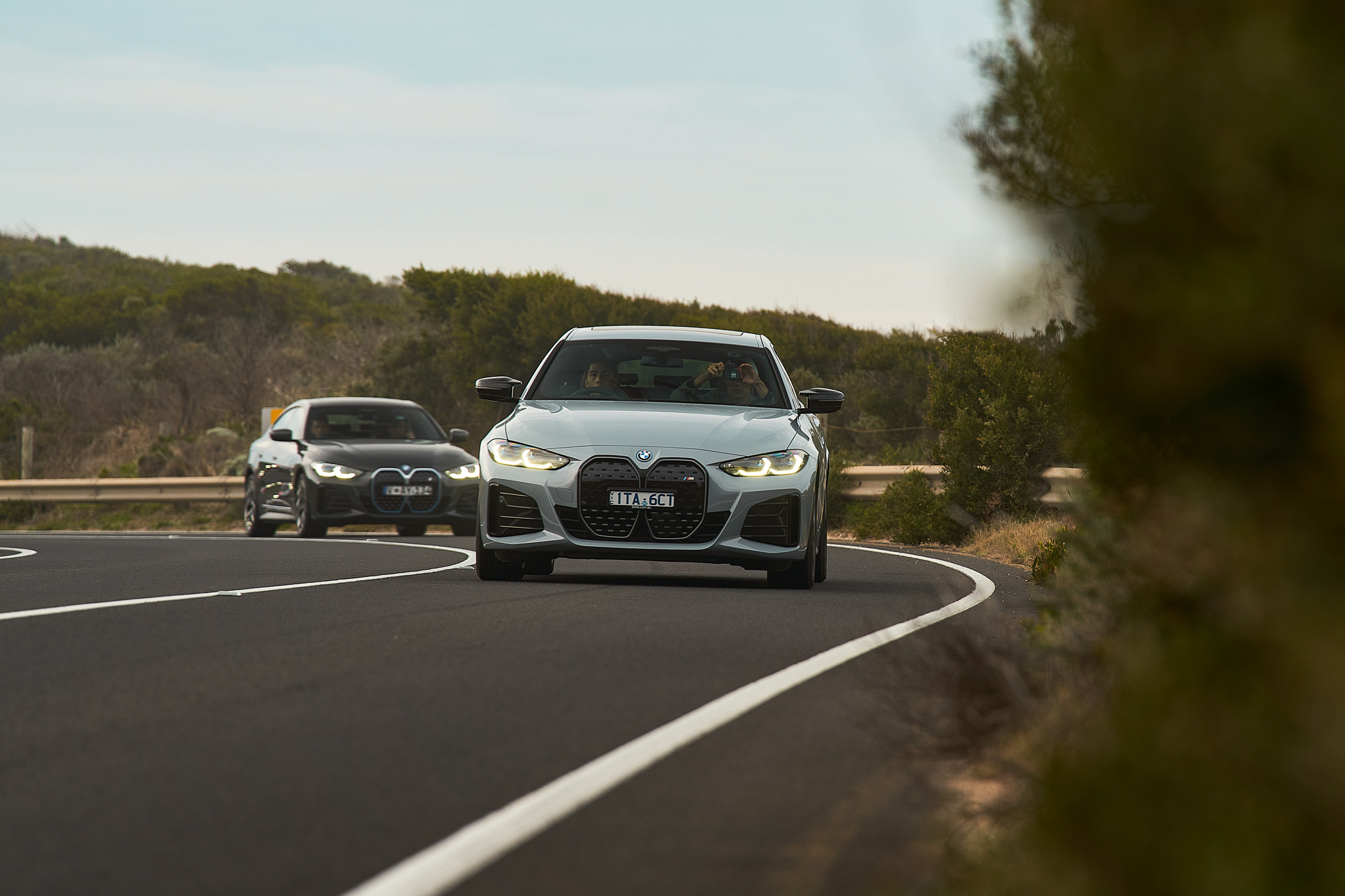
BMW i4 M50 - Is it ///M enough?
The big question is, how does the BMW i4 M50 stack up against the well-established BMW M family? Is it worthy of the M badge?
It’s hard to discern the true measure of an M car. There are many attributes that can make or break an M car, but often these metrics boil down to the intangibles. Emotion, gut feeling, the fizz. Objectively, M cars are supposed to behave and sound a certain way. In that regard, the i4 M50 falls a little short of the mark.
Make no mistake, the i4 M50 boasts very impressive performance metrics. On sport boost, the two BMW M eDrive motors account for a maximum of 544 horsepower and 795Nm of torque. In the car’s more sedate driving modes, you’d still be looking at very potent 475 horsepower and 730Nm.




While it isn’t as raucous and visceral as an ICE-powered M car, it is rapid. 0-100km/h in 3.9 seconds rapid. That’s as quick as the BMW M3 Competition if you’re wondering. Unimpeded, it’ll carry on that pace all the way up to its 225km/h top speed. Those figures are a considerable step up from the eDrive40’s 5.7 second 0-100km/h time and 190km/h top speed.
Blistering as that pace may be, the surge of acceleration isn’t met with any auditory feedback. Sure, you could toggle the BMW IconicSounds Electric function which pipes in a unique Hans Zimmer composed Shepard tone that seemingly rises in pitch but never actually does. A nifty trick, but it pales in comparison to the guttural exhaust notes of an M car reverberating through the cabin.




Mind you, this does have the straight line performance of an M car. But it is still an EV with a heavy mass of batteries in the floorpan. And said mass tends to hamper the dynamism of a car. Because of the structural supports and front motor mounted under the hood, the i4 M50 weighs 210 kilos more than the rear-driven eDrive40. However, the added weight over the front axle does mitigate the front end lift by pushing the 245-section front tyres harder into the tarmac.
It darts into a corner with such agility and poise that defies its 2.2-ton kerb weight, and it stays glued to the road even when you mash the go-fast pedal. You could easily navigate a series of crests and corners with your foot pinned and it doesn’t dance about the tarmac trying to break traction in the rear, thanks to its intelligent AWD xDrive system. Even switching off as many driver aids as I could, the M50 resolutely refused to kick out its back end on public roads.


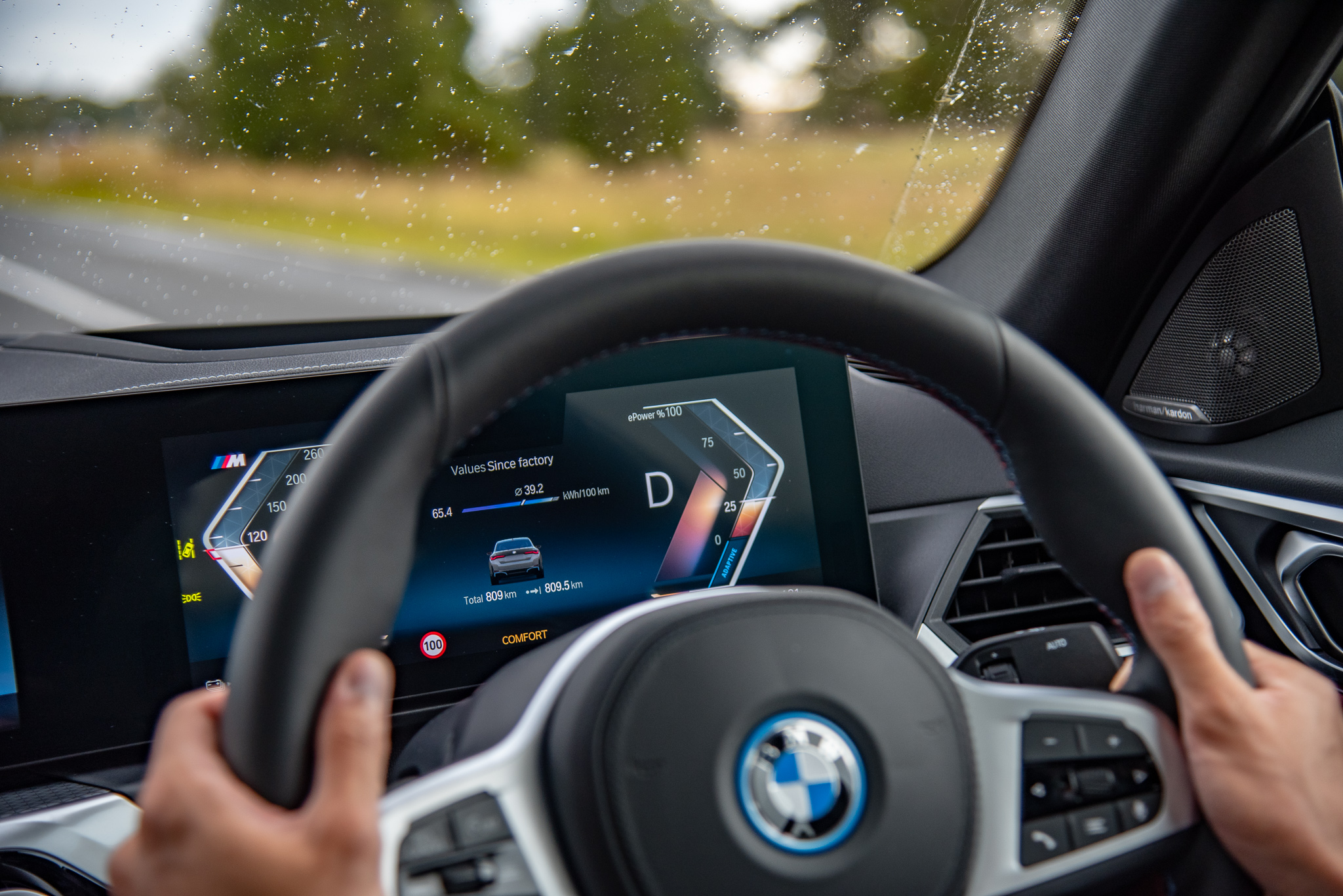


Admittedly, the large majority of our drive was done so in grand tourer fashion. High mileage, high speed, low drama. Given the confines of the Victorian road network, I couldn’t get the best out of these cars as much as I would’ve liked. Despite my very best attempts.
But I digress. Both cars are swell performers in their own regard. The BMW i4 eDrive40, while being a very competent car in its own right, can’t be judged by the same performance benchmarks as the M50. It holds its own about city streets and highways, and even allows you to have a little fun on B-roads when the going gets quicker.
The BMW i4 M50 on the other hand, that’s a bit of a mystery. While I do prefer my Ms with ICE for the time being, the M50 is a fantastic handling gran coupe that ditches showboating in favour of bonkers pace. Crucially, it is unequivocal proof that an electrified future can still be fun and engaging. Lacking in theatrics and flair for the time being, but fun nonetheless.
It might not be a fully-fledged M car just yet, but in its own right, it more than deserves the M badge on its flanks.
PHOTOS BMW & Jay Tee
BMW i4 M50
Battery 83.9kWh (80.7kWh net), Li-Ion, 400V
Electric Motor 544hp/795Nm (sport boost)
Electric Range up to 510km (WLTP)
0-100km/h 3.9secs
Top Speed 225km/h
Efficiency 19-24kWh/100km
Dimensions 4783/1852/1448mm (LxBxH)
Wheelbase 2856mm
Weight 2215kg (wet)
BMW i4 eDrive40
Battery 83.9kWh (80.7kWh net), Li-Ion, 400V
Electric Motor 340hp/430Nm
Electric Range up to 590km (WLTP)
0-100km/h 5.7secs
Top Speed 190km/h
Efficiency 16.1-19.1kWh/100km
Dimensions 4783/1852/1448mm (LxBxH)
Wheelbase 2856mm
Weight 2050kg (wet)









